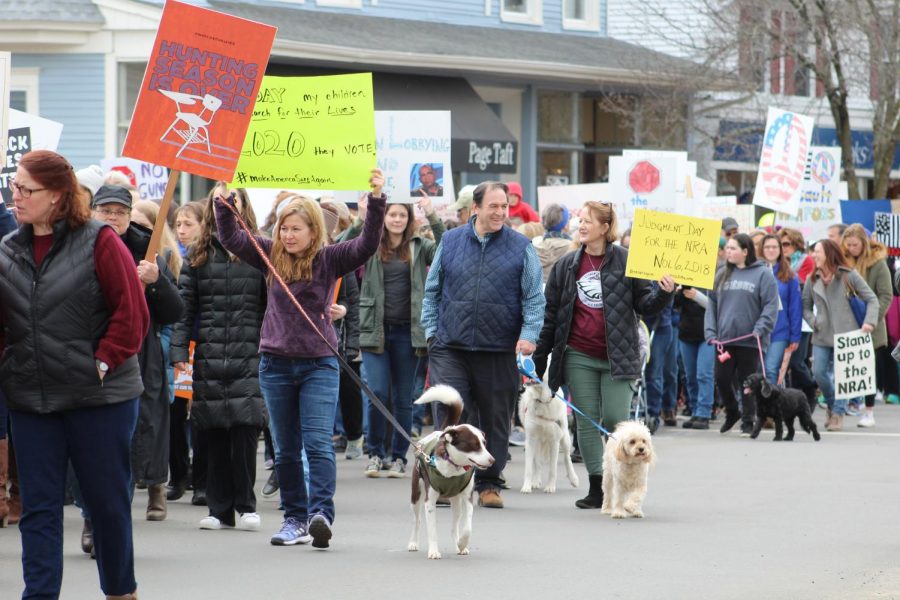By Mark Roseman PH D. – Department of Communications
I remember the effect that Kitty Genovese, the young woman murdered in front of hundreds at her New York City apartment building in the early 1960’s had on me and my suburban Connecticut classmates. It was shocking to us that an individual could be repeatedly attacked in a large parking lot outside their apartment building, that an individual could be repeatedly attacked in spite of her screams and appeals for help, and that an individual could be ignored by a large population of her neighbors from inside a protected apartment building.
The Kitty Genovese story is one which I share with my Fundamentals of Human Communication classes (CO-100) at UNH. It is one which I continue to find haunting today and one which my students find unbelievable.
Yet, I now find that I live in a similar setting with over 100 neighbors at “The Regency,” 200 Elm Street in West Haven. It is here that it is believed that James Ratchford, a husband with an assault record, murdered his wife, Roxanne Young. Troubling, I only discovered this loss early Sunday morning while reading that day’s edition of the New Haven Register, the metro New Haven newspaper.
Kitty Genovese and Young. Incredible as it seems, it flies in the face of reason. It flies in the faces of nearly 125 residents of this building. The Regency, my home since September, is a safe haven for those protected by its walls. It is the last home for Young, who continued to live in an apartment shared with her husband.
I believe there are several questions we need to ask and several questions which cannot be answered. Firstly, who knew of the continuing conflict within that 3rd floor residence? Secondly, why was the 911 emergency call treated solely as a medical issue and not as a culmination of a terrifying attack on one of the resident occupants? Thirdly, what should other Regency neighbors know about the domestic violence and deadly potential in that household? Fourthly, why should I, a resident of the Regency, learn of the death from reading the front page of the paper at a local diner early Sunday morning? I felt I was reading my own obituary. For me, I feel as though a very sad joke was played upon me and my world has crashed around me, leaving me in despair and my world in disrepair.
Can you imagine the incredible irony to learn that “one of your own” neighbors has possibly been viciously murdered in her own home, in your building? This may be an all too common reality for some communities. It is a reality that needs to be checked, to be curtailed, and to be prevented.
A family court mediator and trained sociologist, I have read domestic violence statistics conversed with victims of domestic abuse. In March 2008, I conducted a preliminary study of family professionals in South Florida where I found that most in this initial study would rather stick their proverbial heads in the sand rather than inquire of domestic abuse experienced by their clients. In these days of transparency concerns and accountability, there remains evidence that communicating through intake questions, general discussion, and warnings have yet to be effectively understood and willingly supportive of policy and implementation.
The shock of loss within one’s family, neighborhood, community, and city should prompt serious endeavors to protect all citizens from domestic abuse and other crime. The way that this can be implemented is for all constituents to accept their role with information and education support of those who are or fear victimization.
Rather than finger pointing, there needs to be early detection and intervention with all parties. There is a psychology which threads through victims, generally women, who in spite of the dangers choose not to leave familiar or economically supportive environments.
Interventions will stay the course away from dangers when an incriminated spouse, a demonstrated stalker, and other threatening individual will be forced effectively from the habitat of the victim. The courts have the opportunities to remove those proven to be dangers to others. The courts need to examine their role in remanding a dangerous individual to a more secure location no matter how the victim may prefer to see that outcome.
Recall how last January, Selami Ozdemir ignored his restraining orders, stalked his wife, and found the means to break into her home before killing her and then himself. If the court had looked at his prior behavior with the clarity that an anger management course would not be enough to stop his controlling and threatening behaviors, she would possibly be alive today.
I call upon an immediate task force in New Haven and every county where there is an unacceptable domestic violence frequency. This task force should include area academicians, researchers, police officials, doctors, psychologists, and clergy. This broad based task force should take testimony from all societal providers including 2-1-1 and 9-1-1 dispatchers, agency case managers, family professionals, and police officials as well as from domestic abuse victims and examine what interventions have worked and what interventions may have been helpful had they been used. The task force needs to then examine how a new, coordinated approach to domestic violence may be established with a system of punishments for those who delay or don’t participate in preventing criminal activity which we know of as domestic violence.
When we all accept our role in improving outcomes for all our citizens, we can then move forward to achieving a landscape of greater peace and promise for all our citizens.
Roseman is Practitioner in Residence with the Department of Communication, Film and Theater at the University of New Haven. He is also founding Director of the Children’s Rights Council of Connecticut.








